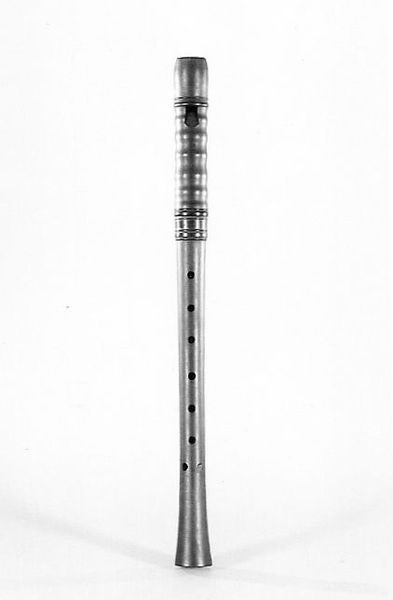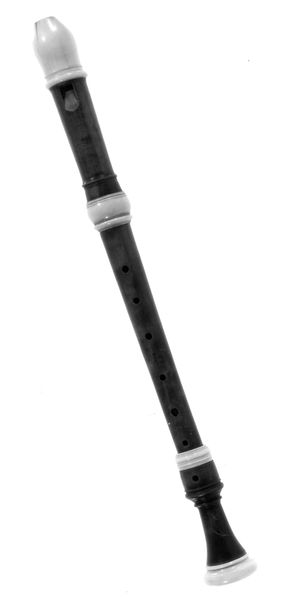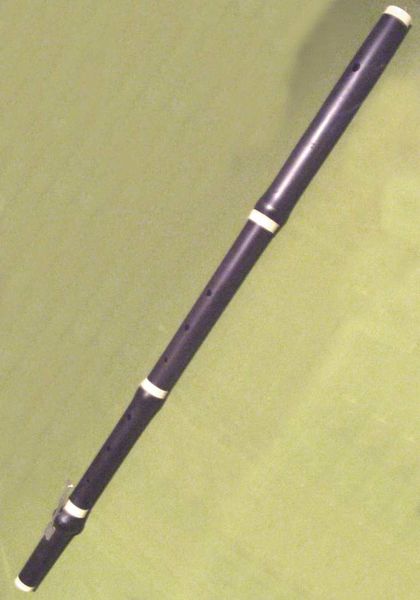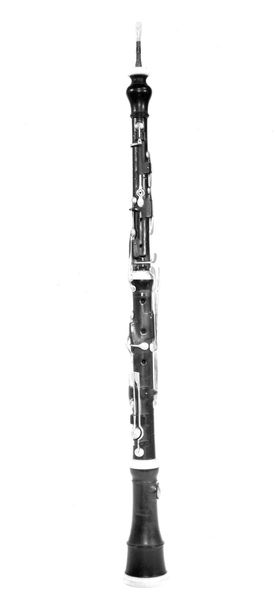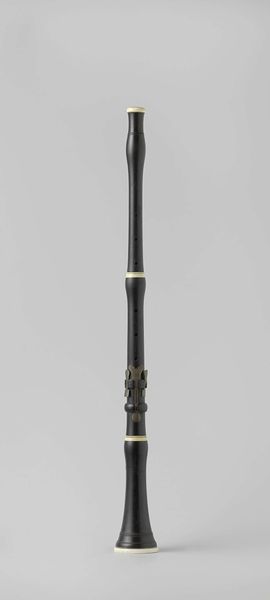
wood
#
wood
#
musical-instrument
Dimensions: Length: 621 mm (24.4 in.); Length of embouchure: 540 mm (21.25 in.)
Copyright: Public Domain
Curator: Let's discuss this interesting instrument. What stands out to you at first glance? Editor: Its stark elegance, certainly. It feels very controlled, the smooth black wood contrasted by those sharp white rings. There's a definite sense of restraint and refinement. What about its historical context? Curator: Indeed. This is a transverse flute in D, crafted by Buhner & Keller, sometime between 1790 and 1847. Instruments like this became more and more ornate and technologically complicated during the early nineteenth century. What strikes me is that an instrument like this isn’t just a piece of craftsmanship; it’s a cultural object imbued with meaning about identity, especially as it pertains to class. Editor: Exactly! And let’s consider that ebony-like wood, likely imported. Its selection would involve resource extraction, transport networks, and a skilled workshop able to shape it. This instrument wasn’t just a tool for music making but an object made under certain conditions in ways that have implications we need to understand. The materiality is central to appreciating its complete story. Curator: Precisely. Owning and playing a finely made instrument indicated not only musical talent, or the performance of such, but economic power. For women, the ability to play, let’s say in a domestic sphere, signaled accomplishments thought to make a marriage partner desirable. Editor: And the limitations it presents! As opposed to a guitar, or even the piano, its transport is relatively easy and so we can think of a middle-class domestic life being subtly molded to include particular crafts, arts, and sounds that are light, airy, decorative even. Curator: It's easy to envision such a narrative being played out in an upper-class setting of the era. An afternoon concert becomes a theatrical representation of an economic power as much as it becomes one of pure musical indulgence. Editor: I find myself wondering about who actually used it. Its delicate form hides the physical labor needed to source its materials and craft its design. Curator: And I'm curious about the power it represents as a status symbol, the gender roles it reifies, and its role in larger social dynamics that are constantly evolving. Editor: It has given me a refreshed look into my personal understanding of art. It made me appreciate craftsmanship in music making through a historical and political context. Curator: Agreed. For me, it reaffirms the importance of contextualizing art and really analyzing the ways an artwork is entangled within various aspects of social identity, gender, class, and the broader societal narratives that govern them.
Comments
No comments
Be the first to comment and join the conversation on the ultimate creative platform.



